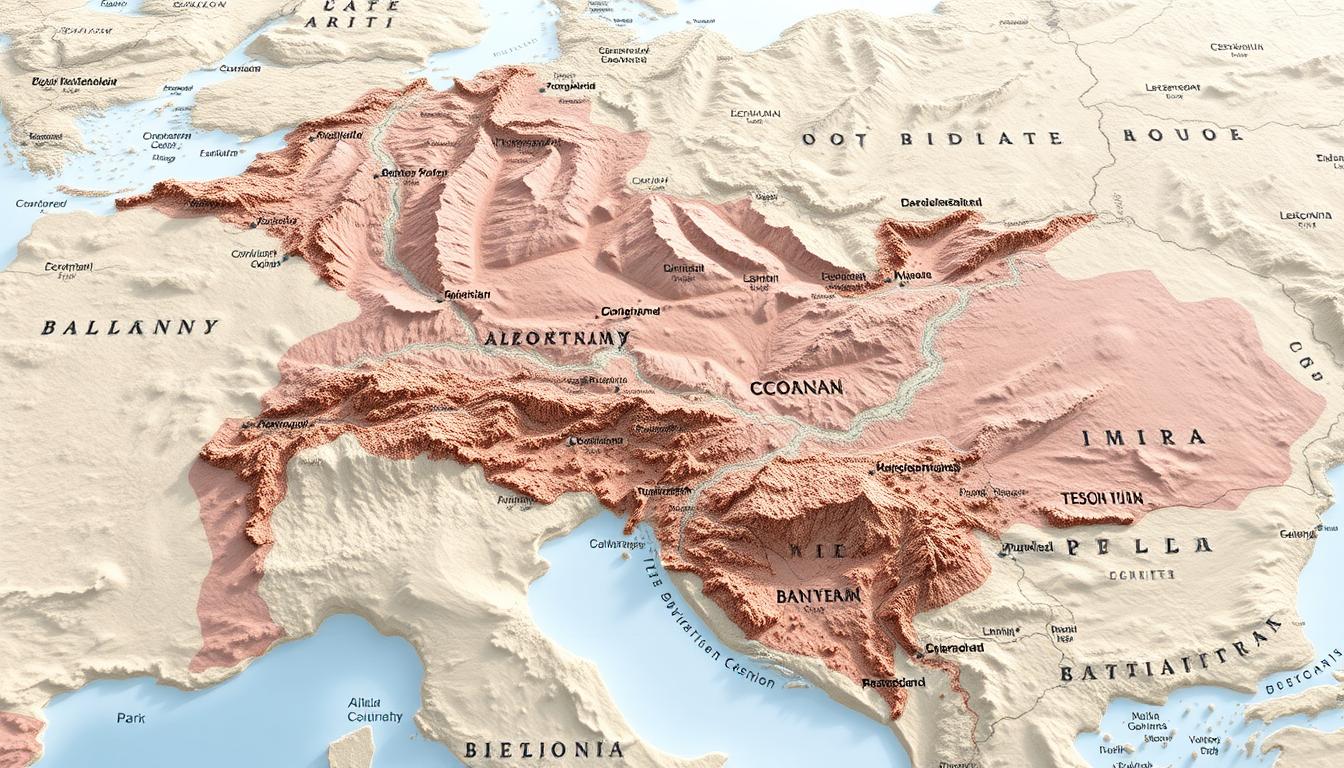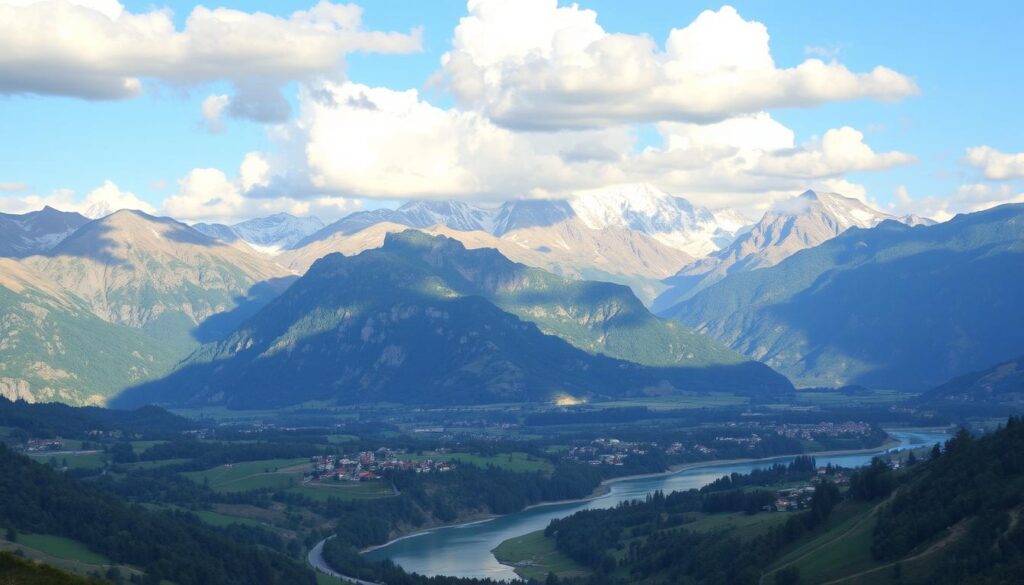Defining the exact number of nations in the Balkan Peninsula sparks ongoing debates among geographers and historians. This southeastern European region blends diverse cultures, shifting borders, and layered histories, making clear-cut classifications challenging. To answer this question, we’ll analyze geographical boundaries, political agreements, and cultural connections.
The term “Balkan countries” often depends on context. Some definitions focus strictly on landmass within the peninsula, while others consider historical or political ties. Organizations like the CIA Factbook and National Geographic offer differing perspectives, reflecting the area’s complexity. Factors like language, religion, and recent geopolitical changes further shape these interpretations.
This article provides clarity using verified population data, territorial maps, and expert analyses. We’ll explore which states fully or partially lie within the peninsula and why certain nations resist the “Balkan” label. From coastal Croatia to landlocked Kosovo, each territory carries unique stories that influence modern classifications.
Key Takeaways
- The Balkan Peninsula’s definition varies based on geographical, historical, or political criteria.
- At least 12 nations are commonly associated with the region, though inclusion remains debated.
- Population statistics and territorial boundaries help clarify which countries qualify.
- Sources like the CIA Factbook provide foundational data for these classifications.
- Cultural identity plays a significant role in how countries perceive their regional affiliation.
Overview of the Balkan Peninsula
Mapping the Balkan Peninsula involves navigating rivers, seas, and centuries of cultural exchange. Its northern edge often follows the Danube River, while the Adriatic and Ionian Seas mark western limits. Yet even these natural borders spark disagreement—some experts argue Slovenia or Romania qualify as part balkan peninsula, while others exclude them entirely.
Geographic Boundaries and Definitions
The rugged Balkan Mountains dominate eastern regions, shaping both terrain and historical trade routes. Bosnia and Herzegovina sits fully within the peninsula, its valleys and rivers illustrating classic part balkan topography. North Macedonia’s inclusion remains contested despite its central location, showing how politics influence geography.
| Country | Inclusion Status | Population (Million People) |
|---|---|---|
| Bosnia and Herzegovina | Fully included | 3.3 |
| North Macedonia | Often debated | 1.8 |
| Serbia | Partial territory | 6.7 |
Cultural and Historical Significance
Over 55 million people inhabit this crossroads of empires, where Ottoman mosques stand beside Byzantine churches. Local identities often reject the balkan country label due to outdated stereotypes. Yet shared traditions—like folk dances spanning Bulgaria to Croatia—reveal deep-rooted connections.
Archaeological sites like Albania’s Butrint showcase layers of Greek, Roman, and Venetian rule. These landmarks explain why definitions of the part balkan peninsula extend beyond maps into collective memory.
How Many Balkan Countries Are There?
Experts frequently disagree on which territories qualify as part of the Balkan Peninsula. While geographers focus on landforms like the Black Sea coastline and Ionian Sea boundaries, political scientists emphasize modern alliances and historical ties. This divergence creates counts ranging from 10 to 13 states, depending on criteria.
Political vs. Geographical Perspectives
Political definitions often include Central European nations like Slovenia, despite its location north of the Danube River. Bucharest’s status as Romania’s capital east of the Carpathian Mountains illustrates how administrative centers influence regional classifications. Coastal access also plays a role—Bulgaria’s Black Sea ports strengthen its inclusion, while landlocked Kosovo faces greater scrutiny.
Variations in Count and Definitions
The Adriatic Coast serves as a natural western border, yet Croatia’s elongated shape means only 56% of its territory lies within geographical boundaries. Scholarly debates intensify around Moldova and Turkey, where less than 10% of their land touches the peninsula.
| Country | Political Inclusion | Geographical Inclusion | Total Population | Capital |
|---|---|---|---|---|
| Romania | Yes | Partial | 19.1M | Bucharest |
| Slovenia | Sometimes | No | 2.1M | Ljubljana |
| Greece | Yes | Full | 10.4M | Athens |
Data shows the region’s total population jumps from 66 million under strict geographical limits to 78 million when political factors apply. These fluctuations explain why even authoritative sources present conflicting numbers.
Detailed Country Profiles and Key Insights
The Balkan Peninsula hosts a mosaic of cultures and terrains, shaped by centuries of history. From bustling urban centers to remote alpine villages, each nation offers distinct demographic patterns and geographic signatures. Let’s examine the data driving these contrasts.
Country Statistics and Demographics
Albania’s 2.8 million people cluster around coastal cities like Tirana, while Bosnia and Herzegovina’s 3.3 million residents reflect a tripartite ethnic mix. Romania stands out with 19 million citizens—nearly a third of the peninsula’s total population. Urbanization rates vary sharply: 68% of Serbians live in cities, compared to Montenegro’s 64% rural majority.
| State | Population | Area (km²) | Key Feature |
|---|---|---|---|
| North Macedonia | 1.8M | 25,713 | Šar Mountains |
| Bulgaria | 6.8M | 110,994 | Rila Monastery |
| Kosovo | 1.8M | 10,908 | Germia Park |
Unique Regional Features and Capital Highlights
Sarajevo’s Ottoman-era bazaars coexist with Austro-Hungarian architecture, embodying Bosnia’s layered identity. Slovenia’s Julian Alps attract hikers, while Croatia’s Dinaric range shelters rare lynx populations. “Mountains don’t just divide regions—they forge resilient communities,” notes a Balkan geographer.
Bucharest’s 1.8 million residents drive Romania’s tech boom, contrasting with Skopje’s classical statues in North Macedonia. Coastal cities like Split and Varna blend ancient ruins with modern resorts, drawing 12 million annual tourists to the peninsula.
Exploring the Geographies and Natural Landscapes
Natural wonders shape the region’s identity, from jagged peaks to shimmering shorelines. These physical features have guided human settlement and cultural exchange for millennia. Three key elements define the area: mountain barriers, river networks, and access to multiple seas.
Mountain Ranges, Rivers, and Coastlines
The Balkan Mountains stretch 530 km across Bulgaria, forming a natural divide between north and south climates. Rivers like the Danube and Sava serve as liquid highways, carrying goods and ideas since Roman times. Over 30% of the peninsula’s coastline features dramatic cliffs meeting the Adriatic Sea.
Coastal zones attract 22 million annual visitors, drawn by Croatia’s 1,100 islands and Albania’s untouched beaches. Inland, the Neretva River carves through Bosnia’s valleys, creating fertile farmland. “Waterways built empires here,” observes geographer Lina Kovac. “Control a river, and you control trade routes.”
Seas and Natural Borders: Adriatic, Black, and Ionian
The Adriatic coastline stretches 7,200 km, blending Italian and Slavic influences in its ports. To the east, the Black Sea connects the region to Eurasian markets. These seas create microclimates—olive groves thrive near the Ionian coast, while northern areas see snowy winters.
| Natural Feature | Length/Area | Key Role |
|---|---|---|
| Danube River | 2,850 km | International trade route |
| Adriatic Coast | 72,000 km² | Tourism hotspot |
| Balkan Mountains | 530 km range | Climate barrier |
Mountain passes like Serbia’s Đerdap Gorge reveal why this crossroads shaped European history. Northern plains transition to southern Mediterranean climates within 300 km. This diversity explains why 14 UNESCO sites dot the landscape, from Montenegro’s Bay of Kotor to Bulgaria’s Pirin peaks.
Historical and Cultural Tapestry of the Balkans
The term “Balkan” originates from Turkish, meaning “mountains”—a fitting label for this rugged land where peaks have shaped identities. Centuries of imperial conquests and trade networks created a cultural mosaic visible in languages, architecture, and traditions today.
Influence of Empires and Historical Crossroads
Ottoman rule left mosques and savory dishes like burek, while Byzantine churches dot coastlines. The Adriatic Sea served as a liquid highway, connecting Venetian traders with Slavic merchants. Coastal cities like Dubrovnik became melting pots, blending Italian and South Slavic influences.
- Yugoslavia’s 20th-century unification reshaped regional politics but preserved local dialects
- Roman roads still underpin major highways, linking the peninsula along Adriatic to inland regions
- Slovenia’s 2.1 million people reflect Central European ties, contrasting Albania’s Mediterranean flair
Modern Cultures, Languages, and Traditions
Over 20 languages thrive here, from Greek to Romani. Festivals showcase this diversity: Serbia’s trumpet-driven Guča Festival draws 500,000 visitors annually, while Bulgaria’s Nestinarstvo fire dances honor ancient rites. Urban hubs like Belgrade mix socialist-era blocks with trendy cafes.
Demographic shifts continue to shape the area. Bosnia’s population fell by 19% since 1990, while Croatia’s Dalmatian Coast attracts digital nomads. As one historian notes, “The Balkans don’t just have history—they breathe it through every tradition.”
Conclusion
The Balkan Peninsula’s identity emerges from a tapestry of contrasting landscapes and cultures. Definitions of its boundaries shift between geographic markers like the Adriatic Sea and political alliances in the Western Balkans. This complexity reflects the region’s layered history and evolving modern identities.
Physical features anchor many classifications. Mountain ranges form natural borders, while coastal zones along Adriatic shores draw millions of visitors annually. Capital cities like Sarajevo and Belgrade embody this duality—urban hubs preserving traditions while embracing progress.
No single metric fully captures the Balkan states’ diversity. Some nations emphasize cultural ties over geographic placement, resisting labels that overlook their distinct narratives. From Slovenia’s alpine villages to Albania’s UNESCO sites, each area contributes unique threads to the regional mosaic.
Understanding the geography Balkan region requires appreciating both natural splendor and human resilience. Whether exploring historic trade routes or vibrant cities, the peninsula invites discovery. Its enduring allure lies in balancing ancient heritage with dynamic reinvention.







